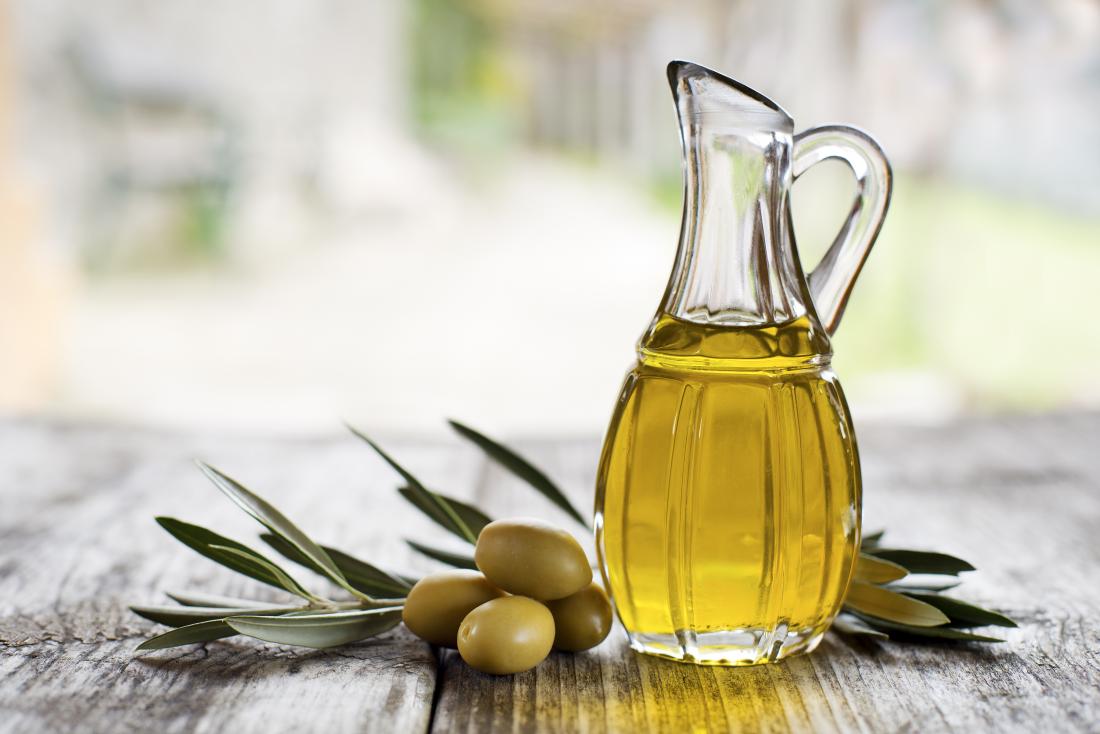The Most Ancient and Healthiest Oil Known to Man

By: Habeeb Salloum/Arab America Contributing Writer
Middle Eastern folkloric tales assert that the olive tree was first grown in the Garden of Eden. Hence, man has known this food producing plant since the dawn of civilization. In the countries edging the eastern Mediterranean, it has been renowned for its fruit whose oil lit the lamps of Mesopotamia, Egypt, Greece, and Rome.
From these venerable lands, its cultivation spread to the four corners of the globe. However, the Mediterranean area has remained its heartland. Today, this part of the world still produces about 98% of the world ‘s supply of both olives and their oil.
Considered the soul and secret of Mediterranean cuisine, the oil is poured over cooked vegetables, used as a dip for bread and used in all types of cooking. This almost all-encompassing use of olive oil has spilled over into many countries. In our times, its tasty and healthful qualities have made it the queen of table oils and the most widely used of the unrefined oils. In North America the demand for olive oil has, in the last decade, gone up at least 2,000 per cent.
The best oil traditionally extracted from tree-ripened olives by cold-pressing, is usually done in four stages. ‘Extra Virgin’ or natural olive oil, greenish-yellow in color and obtained from the first pressing, is the top grade and the most expensive. It has a pleasant nut-like flavor and is treasured by gourmet cooks for use in salads. In the Mediterranean countries, besides being important in the kitchen, this prime oil is utilized as a natural lotion and medicine.
The second pressing is known as ‘pure’ and is the cold pressed variety most often found on grocery shelves in North America. The third and fourth pressings, being less pure, are often blended are used in the manufacture of soaps and other toiletries. All the cold-pressed types keep for a long period of time if stored in a dark place, free from temperature changes.
On the other hand, most olive oil sold in the western world is not extracted by the centuries-old method of cold pressing. Rather, it is refined by modern chemical and mechanical procedures which take out all taste. The oil is then made palatable by the addition of a little of the ‘Extra Virgin’. This is the most common type sold in North America.
The peoples of the ancient civilizations in the Middle East believed that olive oil could cure every ailment except the sickness of death. This belief in its healing qualities has been carried down to our times. Many peasants drink half a cup of olive oil before breakfast, believing that it will cleanse their bodies of impurities. If a person has an infected ear, a little heated olive oil is dropped into it in a number of doses, and it is often used as a massage with sore muscles.
There is no doubt that these folkloric healthful attributes of olive oil have some merit. It has been scientifically proven that it has no cholesterol and is very low in both and polyunsaturated fatty acids. Researchers have found that olive oil stimulates contractions of the gallbladder, making it valuable for a number of that organ’s ailments. Highly rated as a tonic for nerves, it aids and relieving liver disorders, abdominal indigestion problems; and is good for burns, and minor skin eruptions and inflammations.
However, these medical attributes are only side benefits. Olive oil’s true domain is the kitchen where it is used for all types of cooking. It lends itself well to deep-frying because it tolerates without changing a temperature of 550oF. For sauces and salads, it cannot be matched by any other oil. This is especially true when the Extra Virgin variety is used. An excellent salad dressing is one made from an equal amount of this type of olive oil and lemon juice mixed with spices. For a host of other dishes, many gourmet cooks add a little olive oil to give them an exotic aroma and enhance their taste.
OLIVE OIL AND PARSNIP APPETIZER
Serves 8
Excellent for snacks or as a side dish.
2 cups cooked parsnips
2 cloves garlic, crushed
2 tablespoons vinegar
2 tablespoons tahini (sesame seed paste found in heath stores)
1 teaspoon oregano
1/2 teaspoon salt
1/4 teaspoon black pepper
1/8 teaspoon cayenne
1 small tomato, chopped into small pieces
1/2 cup olive oil
Place all ingredients except tomato and 2 tablespoons of oil in a food processor and process into a paste.
Place on a platter and decorate with tomato. Sprinkle with the reserved olive oil and serve.
BURGHUL AND TOMATO SALAD
Serves 8
Makes a nourishing and tasty summer meal.
1 cup fine burghul (bulgur)
2 large tomatoes, diced into 1/2 -inch cubes
1 medium bell pepper, finely chopped
1 cup finely chopped green onions
1 cup finely chopped parsley
2 cloves garlic, crushed
5 tablespoons olive oil
5 tablespoons lemon juice
1/2 teaspoon salt
1/2 teaspoon black pepper
1/2 teaspoon nutmeg
Soak burghul for 10 minutes in warm water. Squeeze out water through a sieve and place in a salad bowl with tomatoes, bell pepper, and onions.
Combine remaining ingredients and pour over salad bowl content. Toss and serve.
OLIVE AND ORANGE SALAD
Serves 6
Various types of this salad are made in Morocco.
4 large seedless oranges, peeled and diced into 1/2-inch cubes
1/2 cup black olives pitted and quartered
3 tablespoons olive oil
2 tablespoons lemon juice
1 teaspoon paprika
1/4 teaspoon cumin
1/8 teaspoon cayenne
Place oranges and olives in a salad bowl and set aside.
Combine remaining ingredients and pour over oranges and olives. Toss and serve immediately.
PEAS COOKED IN OLIVE OIL
Serves 8 Lima or broad beans may be substituted for the peas.
4 cups fresh or frozen peas
2 tablespoons olive oil
2 cloves garlic, crushed
2 tablespoons finely chopped fresh coriander leaves
1 tablespoon finely chopped orange rind
1 teaspoon paprika
3/4 teaspoon salt
1/2 teaspoon black pepper
2 cups water
3 tablespoons lemon juice
Place all ingredients except lemon juice in a saucepan and bring to boil. Cover and cook over medium heat for 15 minutes. Stir in lemon juice and serve.
until beans are tender.
CASSEROLE – BEANS IN OLIVE OIL
Serves 8
A vegetarian version of pork and beans, this casserole can be served as a side or main dish.
2 cups navy beans, soaked for 24 hours and drained
6 cups water
1/2 cup olive oil
2 large onions, chopped
4 cloves garlic, crushed
1 small hot pepper, seeded and finely chopped
4 tablespoons finely chopped fresh coriander leaves
2 cups stewed tomatoes
2 cups chopped celery
4 tablespoons molasses
1 teaspoon salt
1 teaspoon black pepper
Place beans and water in a casserole and set aside.
Heat oil in a frying pan. Sauté onions, garlic, and hot pepper over medium heat for 10 minutes. Stir in frying pan contents and remaining ingredients to beans. Cover and bake in a 350oF preheated oven for 5 hours or until beans are well done.
CHICKPEA VEGETARIAN STEW
Serves 8
Delicious either hot or cold, this stew goes well with cooked rice when hot.
2 cups dried chickpeas, soaked overnight in a mixture of water and 1/2
teaspoon of baking soda, then drained
10 cups water
1/2 cup olive oil
4 medium onions, finely chopped
4 cloves garlic, crushed
4 tablespoons tomato paste
2 tablespoons finely chopped fresh coriander leaves
1 teaspoon salt
3//4 teaspoon black pepper
1/8 teaspoon cayenne
Place chickpeas in water in a saucepan and bring to boil. Cover and cook over medium heat for about 1 1/2 hours or until chickpeas are almost done – still firm.
In the meantime, heat oil in a frying pan. Sauté onions and garlic over medium heat for 10 minutes. Stir frying pan content into chickpeas. Add remaining ingredients and bring to boil. Cover and cook over medium heat for 30 minutes or until chickpeas are soft.
OLIVE OIL AND HONEY DESERT
Serves about 18, if served as a dessert in small dishes
In North Africa, a similar dish is often eaten for breakfast.
1 cup olive oil
1 cup honey
4 tablespoons tahini
Place all ingredients in a food processor and process for a minute. Serve or store for future use.
Can be served as a syrup with pancakes or waffles, or as a sweet in tiny dishes with diners dipping pieces of bread into their dishes.



